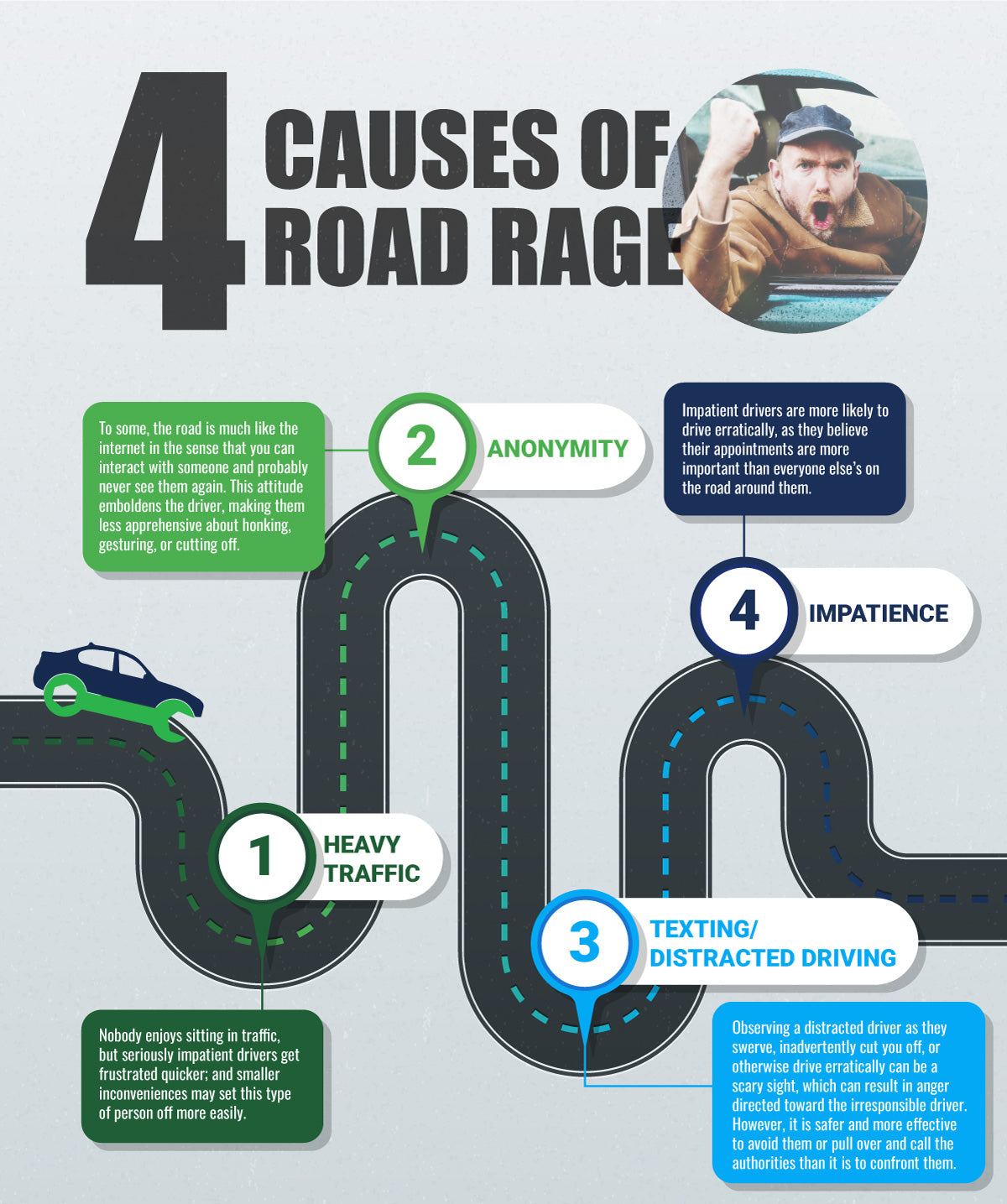You have no items in your shopping cart.

THE FOLLOWING ARTICLE HAS BEEN TAKEN FROM WWW.TOPDRIVER.COM (HTTPS://WWW.TOPDRIVER.COM/EDUCATION-BLOG/CAUSES-OF-ROAD-RAGE/)
We’ve all felt frustration while driving at some point or another. Perhaps someone cuts you off, runs a stop sign next to you, merges improperly, etc. But the line between irritation and road rage is whether or not retaliatory action is taken — something that endangers the lives of everyone around. Here we’ll discuss the causes of road rage and how to deal with a raging driver.
What is Road Rage?
Road rage is explosive anger caused by inconveniences and incidents that occur while driving. It is most often wielded in a retaliatory fashion — the raging driver believes that they have been wronged in some way, anger gets the better of them, and they take revenge on the perceived wrongdoer.
While most instances of road rage result in shouting expletives and nothing more, this is not always the case. Road rage historically has, in some cases, led to violence. In fact, around 12,610 injuries and 218 murders have been attributed to road rage in the past 7 years. An estimated 37% of aggressive driving incidents in the United States involve firearms. These statistics are not meant to be alarmist, but to illustrate the realities and possibilities of taking escalatory actions against strangers on the road.
Most Common Forms of Road Rage
Everybody is different, so it’s hard to say exactly how someone will react when they feel disrespected on the road. Road rage is the manifestation of underlying anger issues — the inability to control oneself and their emotions, making their behavior unpredictable. Some of the most common forms of road rage include:
- Yelling
- Honking
- Tailgating
- Following the perceived wrongdoer
- Blocking traffic or preventing drivers from changing lanes
- Purposely cutting off other cars
- Initiating confrontation outside of the car
- Intentionally ramming
- Speeding
- Weaving
- Driving on sidewalk or median
4 Causes of Road Rage
Psychotherapist Ana Jovanovic stated in an article for NBC News that, “the initial turn [in our mood] usually has nothing to do with the traffic. We can be feeling upset over something that happened at work, or with a friend or a partner. The ‘turn’ we make is allowing angry thoughts to occupy our minds [such that it] infiltrates into the very thing we are doing at that moment, even if that thing — such as driving — has nothing to do with the reason for our anger.”
Oftentimes, road rage is no more than an initial reaction, triggered by the irresponsible behaviour of others; it becomes more serious when you feel it necessary to enact revenge for said behaviour.
While it’s difficult to say exactly what will set someone off, some of the most common factors in road rage incidents are:
-
Heavy traffic.Nobody enjoys sitting in traffic, but seriously impatient drivers get frustrated quicker; and smaller inconveniences may set this type of person off more easily.
-
Anonymity. To some, the road is much like the internet in the sense that you can interact with someone and probably never see them again. This attitude emboldens the driver, making them less apprehensive about honking, gesturing, or cutting off.
- Texting/distracted driving.Observing a distracted driver as they swerve, inadvertently cut you off, or otherwise drive erratically can be a scary sight, which can result in anger directed toward the irresponsible driver. However, it is safer and more effective to avoid them or pull over and call the authorities than it is to confront them.
- Impatience. Impatient drivers are more likely to drive erratically, as they believe their appointments are more important than everyone else’s on the road around them.
How to Prevent Road Rage
-
Leave on time.As stated above, habitual lateness is one of the driving factors of unsafe driving. Check traffic reports for construction, traffic crashes, and other delays before leaving. Be sure to give yourself plenty of travel time to reach your destination so you don’t drive aggressively.
-
Cool down first.Don’t use driving as a way to cool off if you are already angry. If, for example, you’ve just had an argument and go for a drive to blow off steam, you’re more likely to be set off by small, insignificant occurrences.
-
Don’t tailgate.Even if the person in front of you is driving slowly in the fast lane, tailgating will accomplish nothing. At best, the driver will ignore you, at worst, the other driver becomes peeved and retaliates.
- Don’t honk unnecessarily. There are some instances where a light honk might be warranted (eg. the person in front of you sitting still at a green light), but honking out of pure frustration is unproductive and irritating to everybody around you.
- Have empathy.No one is perfect and no one is out to get you, so don’t take everything so personally. Put yourself in their shoes — for instance, if somebody is driving slowly, they may be lost. There’s always two sides to a story, so don’t be so quick to judge.
What to Do if You Are a Victim of Road Rage
If you are on the road and become the target of someone else’s road rage, there are a few steps you can take to minimize the risk of confrontation.
-
Stay calm.Do not provoke the other driver with rude gestures, brake checking, or blocking them.
-
Keep a safe distance.If the other driver is driving erratically near you to get revenge, try to avoid them safely. Do not speed or weave in-and-out of traffic to get away from this person, but try to steer clear, if possible.
- Don’t stop (unless you are at a stop light or stop sign).Stopping in a parking lot can be interpreted as an invitation to face-to-face confrontation, which could escalate to violence.
- Pull into the nearest police station.If you are being tailgated, harassed, and followed by a raging driver, one of the most surefire ways of losing them is to pull into a police station. They will more than likely go on their merry way; but if they are bold enough to follow you still, go into the station and notify the police that an aggressive driver has followed you there.


